Are Garden Orb Spiders Poisonous
ARTHROPODS:
Insects»
Spiders»
Centipedes»
Millipedes»
Sowbugs»
Harvestmen»
Mites & Ticks»
Scorpions»
Identification Tips»
About the Critter Files»
Links»
 | ORB-WEAVER SPIDERS Critter Files/Spiders/Orb-Weaver Spiders By Blake Newton University of Kentucky Department of Entomology |
| | | | | |
| | | | | |
| | | | | |
| | ||||
| TAXONOMY |
| KINGDOM: Animalia | PHYLUM: Arthropoda | CLASS: Arachnida | ORDER: Araneae | FAMILY: Araneidae (orb-weaver spiders) |
| Other Names: Araneids |
| WHAT IS AN ORB_WEAVER? |
| WHAT IS AN ORB WEAVER? |
| Orb Weavers are difficult to distinguish from other kinds of spiders that live in webs, especially cobweb spiders. | |
| The best way to tell the difference between orb weavers and cobweb spiders is by looking at the web itself: the webs made by orb-weavers are very organized, and resemble a circular grid. The webs of cobweb spiders appear disorganized and messy. Orb weavers have 8 eyes, and they usually have large spherical abdomens. Like all spiders, orb weavers have 8 legs, 2 body parts, and fang-like mouthparts called "chelicerae." | |
| SIZE: Body length up to about 1/2" | |
| LIFE CYCLE | |
| Simple metamorphosis: like all spiders, young orb-weaver spiders hatch from eggs and look like tiny adults. They shed their skin as they grow. Many Kentucky orb weavers only live for one year or less. At the end of the summer, many female orb weaver species produce a large amount of eggs (sometimes hundreds) that they wrap in a silken egg case. The young spiders hatch in the spring. |
| ECOLOGY |
| Orb weavers are very common in Kentucky, and can be found almost anywhere. They need weeds, fences, trees, walls, or other upright structures to build their webs. Orb weavers will eat almost anything small enough to get trapped in their webs, especially small insects and other spiders. Like many web-building spiders, orb weavers tend to have poor vision: they don't need to see very well to hunt because they can "feel" whenever prey gets caught in their webs. |
| PEST STATUS | ||
| Orb-weaver spiders are considered beneficial to humans. They eat flies, mosquitoes, ants, and other pest insects. Although many can give a painful bite, no Kentucky orb-weaver spiders are considered dangerous to humans (except to rare individuals who have severe allergic reactions to insect and spider bites). |
| COMMON KENTUCKY ORB WEAVERS | |
| We have many species of orb weavers in Kentucky. Although most of them are similar in shape, orb-weaver spiders come in a wide variety of colors and patterns. Shown below are some of the most common and distinctive orb-weavers. | |
| BLACK AND YELLOW ARGIOPE Argiope spiders are also called "writing spiders" because of the bold zigzag pattern that they build into their web. This webpage from the University of Michigan has lots of detailed info about Argiope spiders. | |
| | |
| MARBLED SPIDER | |
| | |
| STAR-BELLIED SPIDER | |
| | |
| Micrathena spp. | |
| | |
| | |
| FURROW SPIDERS | |
| | |
| Acacesia hamata | |
| | |
| Cyclosa spp. | |
| | |
| Gea heptagon | |
| | |
| Arrowhead Spider | |
| | |
| Neoscona spp. | |
| | |
| | |
| BOLAS SPIDERS | |
| | |
| COLLECTING & PHOTOGRAPHY |
| Orb weavers can be found almost anywhere, indoors and outdoors. Orb weavers and cobweb spiders tend to inhabit similar types of environments, although orb weavers may be more common in wild areas than they are around buildings and other places where people live. If you are careful, an orb-weaver will remain still in its web for a photograph as long as you don't disturb it. Like all spiders, orb-weavers should be preserved in alcohol. |
| ORB-WEAVER FACTS |
| True orb-weavers (Araneidae) and long-jawed orb-weavers (Tetragnathidae) are the only common kinds of Kentucky spiders that make orb webs. The webs of most other kinds of spiders, such as cobweb spiders, appear messy and disorganized. |
| MYTHS - LEGENDS - FOLKLORE |
| Casey Hauser from Winston-Salem, North Carolina, sent us this urban legend about writing spiders: "I was always told when I was younger to never say your name or the name of a loved one around these spiders because any name they heard they would write in their web and that person would die." We had never heard this one before, but it is very interesting (and creepy). Thanks, Casey! Donna Welch from Abbeville, South Carolina, was told as a child that that a person will die if a writing spider "counts your teeth." This saying is also associated with millipedes. We hope it is not true for either organism! Do you know any myths, legends, or folklore about orb-weaver spiders? If so, let us know. |
Original document: 25 May 2004
Last updated: 12 Feb 2010
Photos courtesy R. Bessin and B. Newton, University of Kentucky, except where otherwise noted.
The Kentucky Critter Files are maintained by Blake Newton, Department of Entomology, University of Kentucky.
Contact: blaken@uky.edu
Are Garden Orb Spiders Poisonous
Source: https://www.uky.edu/Ag/CritterFiles/casefile/spiders/orbweavers/orb.htm
Posted by: fieldsbespoormsed.blogspot.com














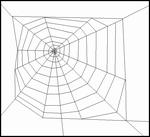
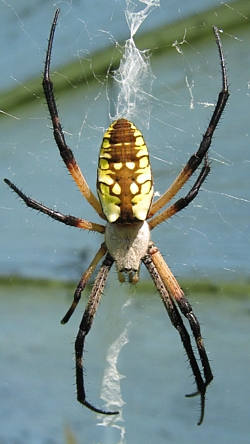
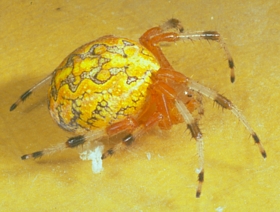







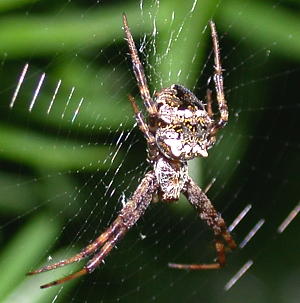

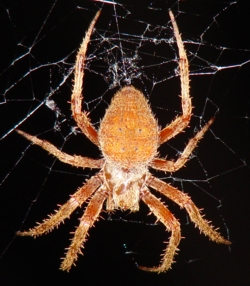

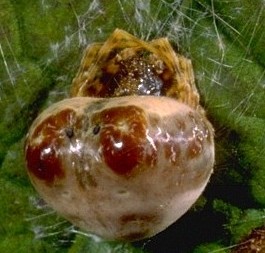
0 Response to "Are Garden Orb Spiders Poisonous"
Post a Comment